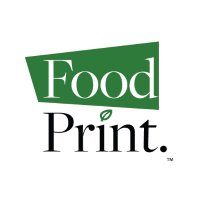
FoodPrint
@foodprintorg
What’s your #FoodPrint? @FoodPrintOrg helps you learn to shop, cook & eat to support a more sustainable food system. Listen to our podcast "What You're Eating."
ID:20729031
https://foodprint.org/what-youre-eating/ 12-02-2009 22:56:24
28,2K Tweets
48,5K Followers
1,6K Following

🍃Not sure what to do about #climatechange ?🍃
🌎Wondering how you can reduce your impact on the environment?🌎
⬇️Subscribe to the FoodPrint newsletter to learn more about how to support a more #sustainable food system.⬇️
foodprint.org/what-is-foodpr…


Is your fridge filled with yesterday’s #Thanksgiving leftovers? Check out our recipe ideas for using up those leftovers, including turkey soup, mashed potato pancakes, stuffing muffins and more: foodprint.org/blog/how-to-la…

Does your #Thanksgiving menu include cranberry sauce? In 2019, we looked at how a warming climate was affecting cranberry growing in Wisconsin, one of the country's top producers — and our findings ring true today: foodprint.org/blog/cranberri…


Do you have a plan for using up your Thanksgiving leftovers after tomorrow’s feast? Check out our tips to help you reduce holiday #foodwaste : foodprint.org/blog/how-to-la…








Are coffee cups recyclable? How about plastic wrap? Martin Mulvihill Charlotte Dreizen weigh in on hard-to-recycle items:
foodprint.org/blog/hard-to-r…

In episode 18 of #WhatYoureEating , we dive into the complicated supply chain of coffee — and discuss with industry leaders how to ensure transparency, fair wages and ethical labor practices for all involved.
Listen to the episode to learn more: foodprint.org/what-youre-eat…



In our latest, Samantha Maxwell unpacks the impact of packaging on wine's carbon footprint, including why glass production creates such high emissions. Can alternatives to the glass bottle make the wine industry more sustainable?
Learn more: foodprint.org/blog/wine-pack…

